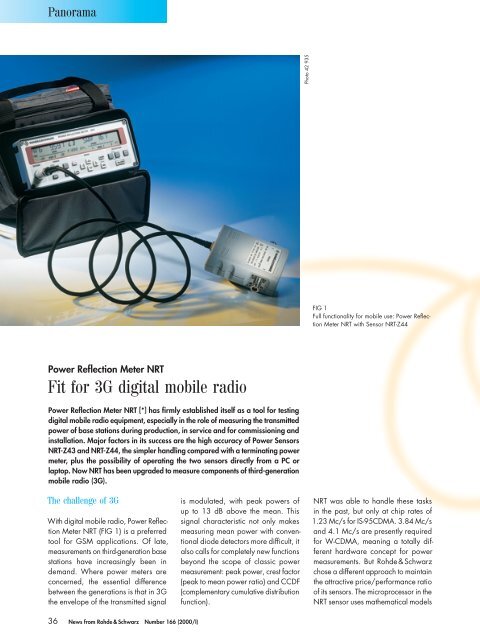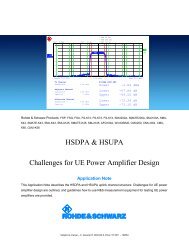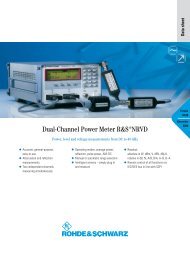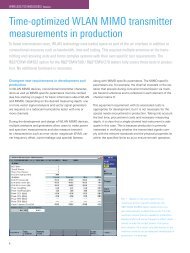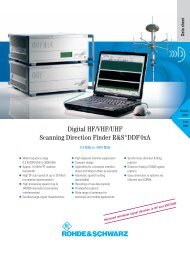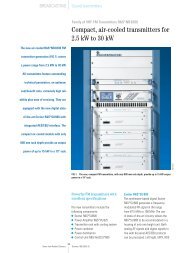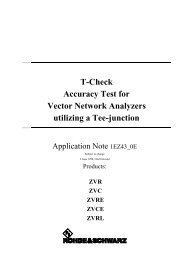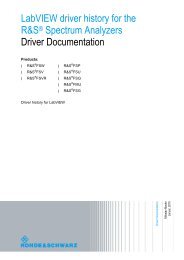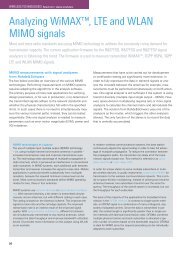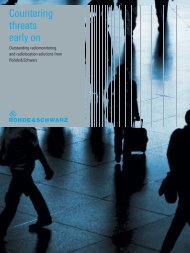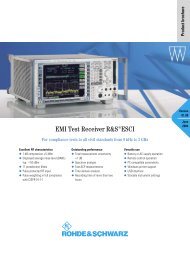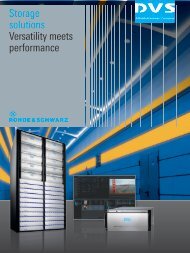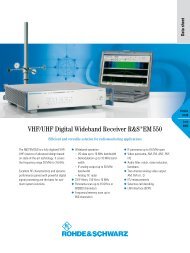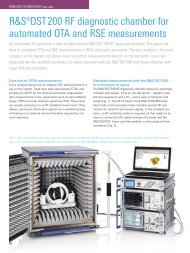English - Rohde & Schwarz
English - Rohde & Schwarz
English - Rohde & Schwarz
Create successful ePaper yourself
Turn your PDF publications into a flip-book with our unique Google optimized e-Paper software.
Panorama<br />
Power Reflection Meter NRT<br />
Fit for 3G digital mobile radio<br />
Power Refl ection Meter NRT [*] has fi rmly established itself as a tool for testing<br />
digital mobile radio equipment, especially in the role of measuring the transmitted<br />
power of base stations during production, in service and for commissioning and<br />
installation. Major factors in its success are the high accuracy of Power Sensors<br />
NRT-Z43 and NRT-Z44, the simpler handling compared with a terminating power<br />
meter, plus the possibility of operating the two sensors directly from a PC or<br />
laptop. Now NRT has been upgraded to measure components of third-generation<br />
mobile radio (3G).<br />
The challenge of 3G<br />
With digital mobile radio, Power Refl ection<br />
Meter NRT (FIG 1) is a preferred<br />
tool for GSM applications. Of late,<br />
measurements on third-generation base<br />
stations have increasingly been in<br />
demand. Where power meters are<br />
concerned, the essential difference<br />
between the generations is that in 3G<br />
the envelope of the transmitted signal<br />
36 News from <strong>Rohde</strong> & <strong>Schwarz</strong> Number 166 (2000/I)<br />
is modulated, with peak powers of<br />
up to 13 dB above the mean. This<br />
signal characteristic not only makes<br />
measuring mean power with conventional<br />
diode detectors more diffi cult, it<br />
also calls for completely new functions<br />
beyond the scope of classic power<br />
measurement: peak power, crest factor<br />
(peak to mean power ratio) and CCDF<br />
(complementary cumulative distribution<br />
function).<br />
Photo 42 935<br />
FIG 1<br />
Full functionality for mobile use: Power Refl ection<br />
Meter NRT with Sensor NRT-Z44<br />
NRT was able to handle these tasks<br />
in the past, but only at chip rates of<br />
1.23 Mc/s for IS-95CDMA. 3.84 Mc/s<br />
and 4.1 Mc/s are presently required<br />
for W-CDMA, meaning a totally different<br />
hardware concept for power<br />
measurements. But <strong>Rohde</strong> & <strong>Schwarz</strong><br />
chose a different approach to maintain<br />
the attractive price/performance ratio<br />
of its sensors. The microprocessor in the<br />
NRT sensor uses mathematical models


